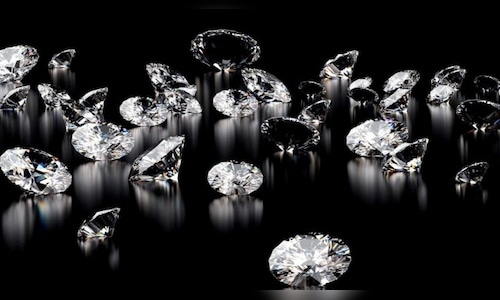[ad_1]
While the rise of lab-grown diamonds, also known as synthetic diamonds, is creating buzz in the affordable luxury space, experts believe it could put pressure on segments like daily wear jewellery, though core wedding collections may remain unaffected.
Synthetic diamonds are produced in controlled environments using advanced technology that mimics the natural diamond formation process.
Read Here | Are natural diamonds losing their sheen? Experts weigh in
As the cost of natural diamonds continues to rise, lab-grown alternatives are gaining traction, particularly among budget-conscious consumers.
India, traditionally a global hub for diamond cutting and polishing, is now becoming a key player in the lab-grown diamond sector.
Pooja Sheth Madhavan, Founder and Managing Director of Limelight Lab Grown Diamonds, highlighted the rapid growth of this market, stating, “The global market for lab-grown diamonds is currently valued at $15 billion, and India is seeing a 15-20% increase in consumption year-on-year. After the US, India is positioned as the next major market for lab-grown diamonds.”
The entry of multiple players into this space is accelerating growth.
For instance, Trent recently launched its lab-grown diamond brand, ‘Pome,’ marking its entry into the sustainable luxury segment.
Kotak Institutional Equities is optimistic about Pome’s potential to drive the widespread adoption of lab-grown diamond jewellery in India.
Abneesh Roy, Executive Director at Nuvama Institutional Equities, believes that while lab-grown diamonds are unlikely to disrupt Titan’s core wedding jewellery segment, they could impact its daily wear lines, such as Mia and CaratLane.
Titan’s strong customer trust, built through its buyback policies for diamonds and gold, may help the company cushion any significant blow.
Also Read | Lab-grown diamond market expected to double in volume by 2030
However, Roy noted that price fluctuations in the lab-grown diamond sector—caused by oversupply leading to a 70-90% price drop in recent years—raise concerns about the long-term value of these products. Price stability will be essential for consumer trust in this market.
Senco Gold & Diamonds is also tapping into the lab-grown diamond market, projecting that this segment, alongside other non-jewellery segment, will contribute about 5% to its revenue in the next 4-5 years.
The company’s subsidiary, ‘Sennes Fashion,’ will explore a range of luxury items, including lab-grown diamonds, leather accessories, and perfumes.
Sheth Madhavan addressed the question of whether lab-grown diamonds are cannibalising natural diamond sales.
She explained that the market growth stems from a mix of new consumers entering the diamond market and existing customers opting for lab-grown alternatives for larger purchases.
“In India, fewer than 5% of women have historically owned diamonds, while 95% aspire to. We are now seeing even those who already own diamonds—especially larger solitaire pieces—turning to lab-grown options for more significant purchases,” she noted.
[ad_2]
Source link










